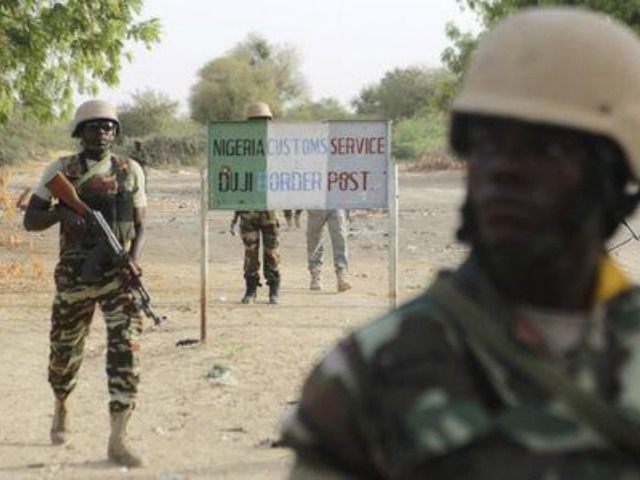The Nigerian war against jihadist terror group Boko Haram now has two clear fronts: the Sambisa forest, a northeastern enclave said to be the last stronghold of the group; and Lake Chad, whose islands are becoming increasingly easy targets for Boko Haram to hit.
The Sambisa forest is home to all the week’s good news: the nearly 500 captives the Nigerian army claims to have freed from Boko Haram, and a new report claiming that up to 400 Boko Haram terrorists were killed in the operation.
Lake Chad is another story. After a massacre on Karamga Island that left hundreds dead, a Nigerien governor is forcing evacuations of the islands under his state control.
“Due to security imperatives, the governor of the region of Diffa has the honor of inviting the populations living on the islands in the Nigerien part of Lake Chad to leave the islands and rejoin the mainland,” said a statement from the Nigerien regional government released today. Lake Chad has territories belonging to Niger, Nigeria, Cameroon, and Chad; this is the first such mass evacuation in response to a Boko Haram threat in the lake. Reuters places the number of dead Nigeriens during the Karamga Island attack at “at least 74,” though many are still missing. As civilians attempted to flee the assault by jumping into the lake, it is believed that many drowned in the attempt.
The flight out of Lake Chad has exacerbated a refugee crisis that has left 4.3 million Nigerians internally displaced, refugees in their own country. Those who escaped the islands of Lake Chad to avoid the fate of those on Karamga Island are largely relegated to refugee camps, where life is difficult. Some refugees, interviewed by the Red Cross, describe “unbearable suffering” in the Lake Chad region which forced them to try their luck on the mainland.
Meanwhile, the news out of the Sambisa forest in northeast Nigeria continues to be equal parts positive and confusing. On April 28, Nigerian authorities announced that they had rescued almost 300 girls and women from the forest, from an area that witnesses had claimed in months past was the new home of the hostages from Chibok, girls kidnapped during a physics exam in April 2014 whose plight became an international outrage. A second round of rescues two days later now puts the total number of liberated women and children up to “nearly 500.”
Authorities notes, however, that the girls and women do not appear to be from Chibok. In fact, they seem to have little idea who these people are at all.
Chibok parents reacted with anger at the announcement that the rescued girls and women were not their relatives, particularly given conflicting reports that claimed the Nigerian government had no way of knowing the identities of those rescued yet. The sheer number of those who need to be processed combined with intense psychological trauma making communication with many difficult has become a hurdle in identifying those found in the forest.
At least one Nigerian media outlet reports that some of the girls and women rescued in the first assault are from Gumsuri, a town razed to the ground by Boko Haram terrorists in December. The numbers match those of the missing from the village.
On Thursday, the Nigerian government began revealing their estimates in the number of Boko Haram fighters killed in attempts to release the captives. An anonymous “top military officer” told Nigeria’s Daily Post that they had killed “over 400 Boko Haram fighters and commanders” in the forest. It is unknown how many Boko Haram jihadists are currently hiding in the forest, or what the proportion of those killed is to the total number of members of the group.
The Daily Post also shared some of the first images of those released from captivity since the announcement of their rescue– harrowing images that express how far the Nigerian government will have to go in returning these people to a normal life:



Nigerian Director of Defense Information Chris Olukolade said in a statement Thursday that the rescues were ongoing, so the government was going to refrain on releasing information until they had a more complete picture of the situation:
The true identity of some of the rescued women and girls are yet to be ascertained. At the moment, what is uppermost and of priority is their movement to a conducive place, where they are now undergoing thorough profiling to verify their true identity; where they come from, how they found themselves in the forest, etc… Additional number of persons is still being recovered from the forest.

COMMENTS
Please let us know if you're having issues with commenting.